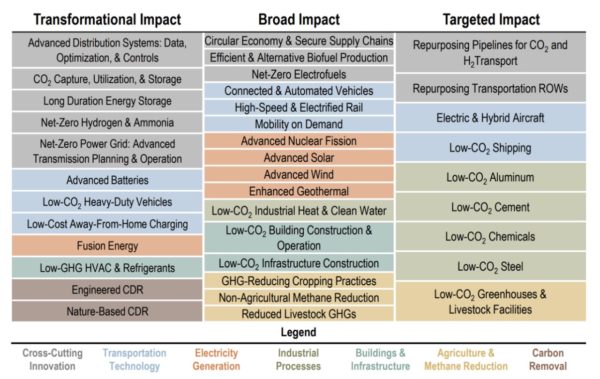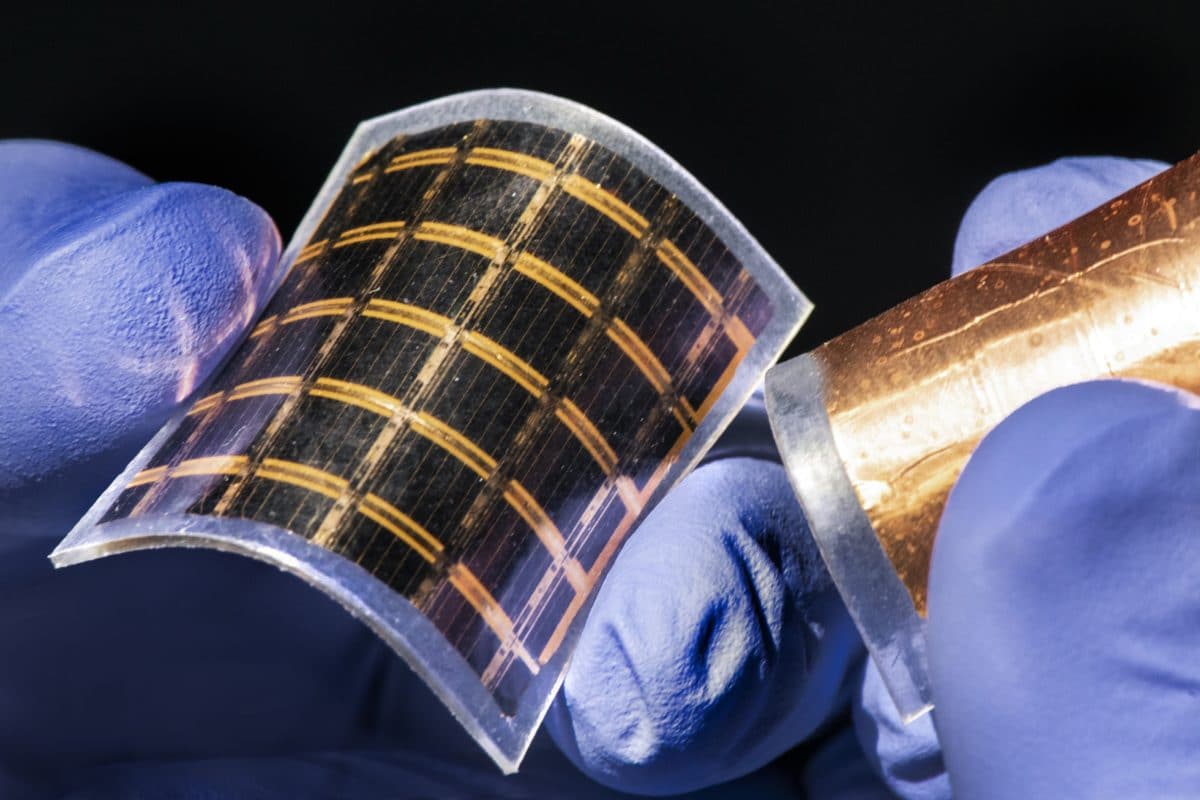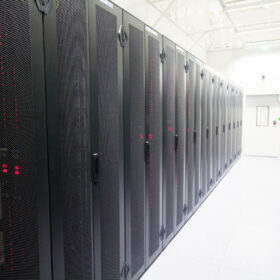The U.S. government is pursuing 37 research and development (R&D) opportunities to help reduce greenhouse gas emissions 50% by 2030 and reach net-zero by 2050, says a White House report.

The R&D opportunities are listed in the chart above. The Department of Energy is taking the lead on most of them.
The report credits the importance of existing technologies such as solar, land-based wind, energy efficiency, and electric vehicles, saying they will “still be primary drivers” of decarbonization. But the report cites an International Energy Agency projection that “almost half” of the emissions reductions needed globally will “come from technologies that are currently at the demonstration or prototype phase.”
Identifying the 37 R&D priorities is “a first step toward a coordinated and accelerated national net-zero innovation strategy,” the report said.
Three recently enacted laws that support this strategy, said the report, are the CHIPS and Science Act, which allows for R&D that can include earlier-stage net-zero innovation, the Bipartisan Infrastructure Law, which enables demonstration of clean hydrogen and carbon removal, and the Inflation Reduction Act, which accelerates deployment of clean energy technology through tax credits, loan guarantees, grants and rebates.
The report did not discuss specific funding levels available for R&D.
Power grid
Within the priority area of a net-zero power grid and electrification, the report focuses on four R&D opportunities.
“Transformational change” in electricity distribution is needed, the report said, to enable widespread electrification of vehicles, appliances and industry; integration of customers’ generation, storage, and flexible demand resources; and new grid architectures.
To advance transmission, the report said “innovations are needed” in transmission planning, grid-enhancing technologies, grid architecture, and operational control.
Beyond that, enabling transmission along the 48,000-mile interstate highway system, plus 140,000 miles of freight rail lines, could “accelerate siting and reduce the costs” of adding transmission. Meanwhile, R&D efforts could develop advanced construction methods for undergrounding high-voltage and high-capacity AC and DC cables.
As for long duration energy storage, the Department of Energy aims to reduce its cost by 90% within the decade.
Solar, wind R&D
Describing “advanced solar” opportunities, the report points to “innovative thin-film solar cells,” including solid-state perovskite, that could be easier and less energy-intensive to manufacture than silicon solar cells, and have higher efficiency, with “even higher” efficiency when used in tandem with silicon.
“Advanced wind” opportunities are seen for floating wind turbines, aimed at reducing costs for deep-water offshore wind to $45 per MWh. To get the power to shore, the R&D opportunity is to advance technologies and control systems for high-voltage direct-current long-distance transmission.
The report sees a key role for net-zero hydrogen and ammonia, which could be produced with renewable power.
Other priorities
The other four priority areas listed in the report are efficient building heating and cooling, net-zero aviation, fusion energy at scale, and low-carbon industrial processes.
The White House report is the result of an interagency process, and is titled “U.S. innovation to meet 2050 climate goals: assessing initial R&D opportunities.” The list of R&D opportunities is subject to future revision, the report said.
This content is protected by copyright and may not be reused. If you want to cooperate with us and would like to reuse some of our content, please contact: editors@pv-magazine.com.








By submitting this form you agree to pv magazine using your data for the purposes of publishing your comment.
Your personal data will only be disclosed or otherwise transmitted to third parties for the purposes of spam filtering or if this is necessary for technical maintenance of the website. Any other transfer to third parties will not take place unless this is justified on the basis of applicable data protection regulations or if pv magazine is legally obliged to do so.
You may revoke this consent at any time with effect for the future, in which case your personal data will be deleted immediately. Otherwise, your data will be deleted if pv magazine has processed your request or the purpose of data storage is fulfilled.
Further information on data privacy can be found in our Data Protection Policy.